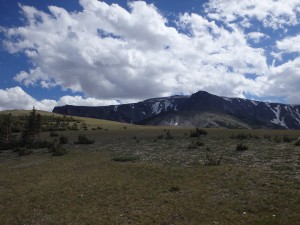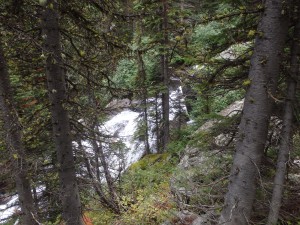What to do When You’re Lost in the Woods
You feel your chest tighten up, your heart races, and your eyes dart back and forth trying to find a way out. You’ve become lost in the woods, and you just realized that you can’t find the way out. As the terror subsides, there’s the urge to just run- your adrenaline starts pumping, and your body tries to fix the problem by telling you to go as far as you can in a single direction. When the adrenaline wears off, you realize how hopeless your situation is. The landscape seems alien to you- did you cross this path before? The woods close in on you, and the trail seems miles away. What do you do, now?
Don’t Panic
The first thing to do when you’re lost is to try and keep calm, which is difficult to do since being lost is one of our most primal fears. However, fear and anxiety have never helped anyone in an emergency situation. Consider the fact that you are not alone- between 1992 and 2007 there were over 65,439 search and rescue attempts made, during which only 2,659 involved fatalities. That means that you have a 96% chance of making it, which are really good odds. Bearing that statistic firmly in mind, you will need to assess your situation next.
Stop and Assess the Situation
The next thing to do when you’re lost is to stop and access the situation you’re in. This is where the self rescue vs. reliance on a search and rescue team comes into play. To make this extremely important decision, you need to ask yourself several questions:
1.) Do I know roughly where I am?
Do you know where you are? Do you know which valley or drainage you are in? Do you know the geography in the area? If you answered no to all of these questions, stay put. Wandering through the woods with no idea where you are is extremely dangerous, and will hurt your chances for rescue.
2.) Is there running water nearby?
One good rule on self rescuing is to follow water downhill. Generally speaking, roads and civilization lie downhill of a mountain, so following a stream downhill can be a smart move. It can also be a dangerous path, however, as the chances of meeting wildlife, or slipping and falling, greatly increase with following a body of water through the forest. If you do decide to follow a stream to civilization, try to stay approximately 100 feet from the stream. This will reduce the chances of meeting wildlife, slipping, or being blocked by cliffs.
3.) Is it safe to stay where I am?
If you’re on an exposed rockfield, or on a high alpine plateau, you need to find a safe shelter immediately. Since rock fields typically don’t provide adequate shelter from anything, you should find the safest way down to the tree line that you can find, and follow it down. Finding shelter is an absolute must in an emergency situation, and you must make it your highest priority.
4.) Does anyone know that I am here?
If your friends or family won’t miss you for a few days, self rescue becomes a more realistic option. Alternatively, if your family will miss you at sundown, it might make more sense to spend the night on the mountain. Although it seems that it is counter productive to wait for rescue, it usually is better than hiking in the wrong direction in search of help.
Self Rescuing
If you are absolutely certain that you can find the trailhead on your own, self rescuing may be a viable option. Although I don’t normally recommend it (far too many hikers have made rescue more difficult for a search and rescue team by hiking further into the mountains), self rescue can be a viable option if you know the area well, and have a general idea of where you are. From here (assuming you have enough daylight for an off-trail trek) find a waypoint that is downhill and clearly visible, and work towards it. As you move along, keep adjusting your direction of travel, until you reach your target. Once you’ve reached that target, re-assess your situation. Pick a new waypoint in the same direction, keep moving downhill, and hopefully towards the trailhead and civilization.
If you are rescued by a search and rescue team, or wander out of the wilderness by yourself, keeping a positive attitude is an absolute must. A quality first aid kit, and packing these essential items will significantly improve your chances of survival. Although we like to think that getting lost only happens in large forests, it can happen anytime you are in the outdoors. Remember that a clear head will serve you well- don’t panic, keep re-assessing your situation, and with the right preparedness you’ll survive.

